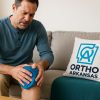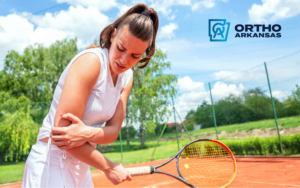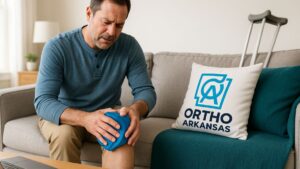Fall Prevention Is A Balancing Act
For individuals living with chronic pain from their orthopedic conditions, pain management is a balancing act. Even when taken exactly as prescribed, opioid pain medications greatly increase fall risks, especially for older individuals.
Falls are the main cause of deaths among seniors, and more than 1 in 4 older adults fall each year, according to the National Institute on Aging.
Because opioid pain medications are often accompanied with side-effects that affect balance, such as drowsiness and dizziness, seniors reduce the chances of a fall by remembering the little things. Too little sleep, too little hydration (or a little too much alcohol) can interact with pain medications, affect balance and lead to serious injuries.
Preventing Falls: Tips for Pain Medication Users
Take proactive steps to avoid injuries by adding these fall prevention tips into daily routines.
Stay Hydrated
It’s no secret that staying properly hydrated is key to better overall health, but it’s especially beneficial for individuals managing chronic pain and taking medications. Dehydration causes dizziness and lightheadedness—issues that can already be heightened by certain medications. Stay well hydrated, and be mindful of any medications that may increase your need for fluids.
Eat for Stability
Maintaining a well-balanced diet is another cornerstone of fall prevention for pain medication users. Nourishing your body with the right foods can help minimize the risk of dizziness, fatigue, and weakness often associated with both pain and pain medications. Aim to include a variety of fruits, vegetables, lean proteins, and whole grains in your diet to ensure you’re receiving the necessary nutrients to support strong bones and healthy joints.
Pace Yourself
When navigating daily activities, individuals on pain medications need to pace themselves to avoid overexertion. Be mindful of physical limitations and take breaks when needed. Listening to your body and knowing when to slow down can significantly reduce the risk of falls or other injuries.
Keep Your Cool
Certain pain medications can make individuals more susceptible to overheating, especially during physical exertion or exposure to seasonal high temperatures. It’s important to be aware of this potential side effect and take proactive measures to stay cool. Utilize cooling strategies such as wearing breathable clothing, staying in shaded areas, and using fans or air conditioning during warmer weather.
Caution with Alcohol & OTC Medications
Alcohol consumption and over-the-counter medications can pose serious risks for those on pain medications. The combination of these substances can intensify the sedative effects of pain medications, leading to impaired coordination and increased fall risk. It’s important to approach alcohol consumption with caution and consult with a healthcare professional before using any over-the-counter medications to avoid potentially harmful interactions.
On Solid Footing
Take meaningful strides for your well-being. Remember, while managing chronic pain and its associated medications can present unique challenges, staying attentive goes a long way in reducing the risk of falls and staying on solid footing.













